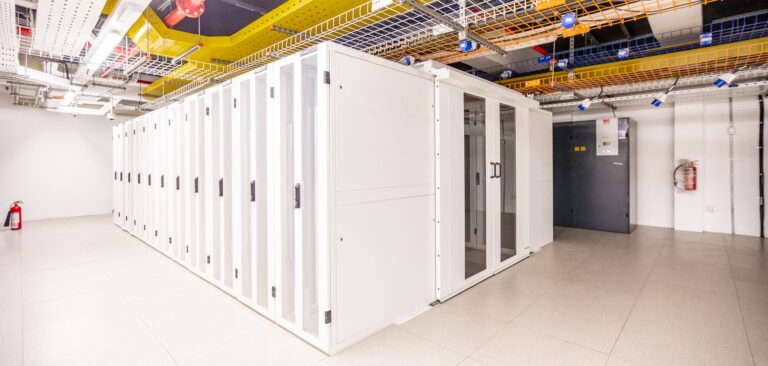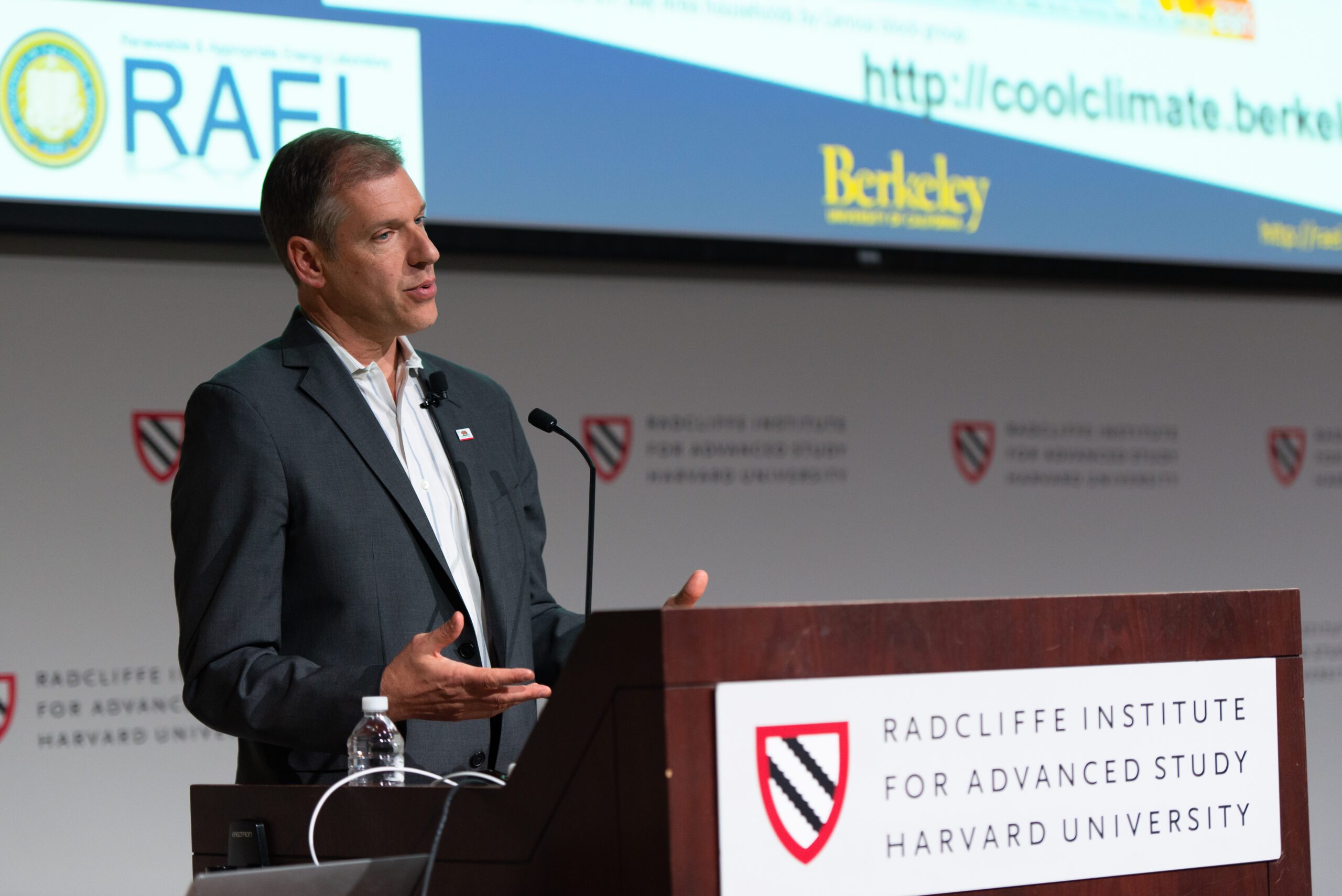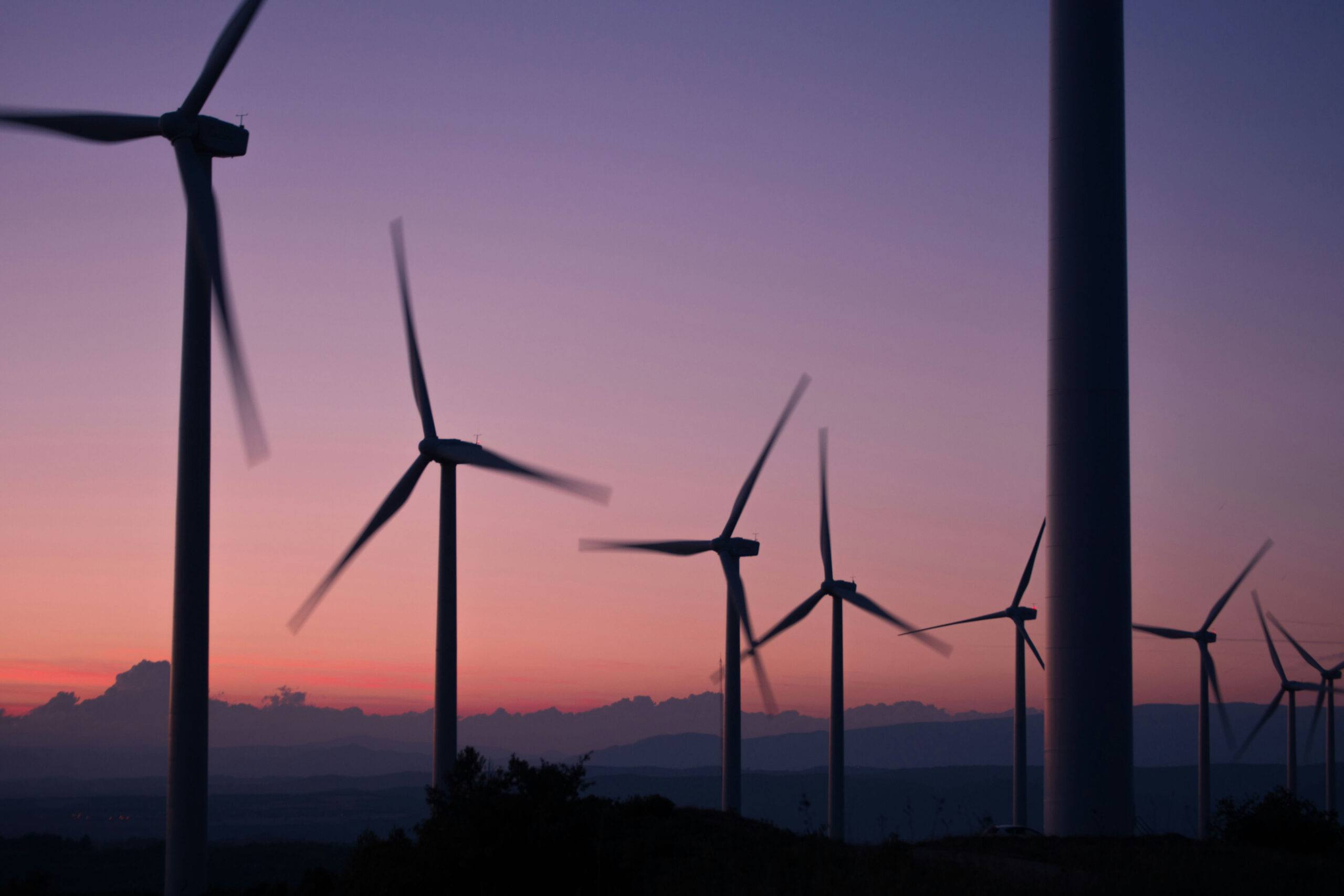
Africa data centres power up
Data centre operators are building capacity to serve a fast-growing digital economy
Around the world, data centres are a hot new asset class. Investment in these specialised warehouses, which store, process and deliver every byte of our digital lives, is forecast to more than double in the next seven years[1]. This is thanks to an explosion in the use of artificial intelligence (AI) tools, and the growth of cloud services, e-commerce, digital payments and streaming services, and the needs of households, government and business.
At present, the US and Europe host most of the world’s data centre capacity[2], with build-out growing quickly in Asia. Africa is home to 307 megawatts (MW) of data centre capacity, or less than 2 per cent of the global total, according to the Africa Data Centres Association[3] (ADCA).
Experts believe current capacity in Africa is about right for its present needs. “But that could change very quickly,” says Heath Andersen, who leads DCDesign.Africa, a South Africa-based consultancy for data centre investors and developers. “Africa has a very young and talented population that is under-connected and under-served. Digital usage is low today, but five to 10 years from now it could be much higher.”
Industry association the ADCA estimates the continent will need an additional 1,200 MW in data centre capacity by 2030[4] to meet the demand for digital services.

“Africa really is the final frontier for digital growth,” says Raza Hasnani, chairman of the Board of Directors of Paix Data Centres, which operates two centres in Nairobi (Kenya) and Accra (Ghana), and has several in development in cities including Dakar (Senegal), Abidjan (Côte d’Ivoire) and Kigali (Rwanda). “Africa is the one place where it’s almost certain that massive data centre capacity will be needed over the next 20 years.” Many factors are coming together to create a potential boom, he says, although it’s likely to happen “in fits and starts”.
Lots of power, preferably green
Data centres consume a lot of power, 24/7, for data processing and cooling equipment. Access to cheap, reliable grid power is therefore a deal-breaker for many developers. Increasingly, the clients of data centres want this energy to be green.

Daniel Kammen, professor of sustainability at the University of California, Berkeley, notes that new generating capacity, and in particular clean energy capacity, is needed to make data centres a sustainable growth industry on the continent. “A clear strategy for governments is to invest in large-scale solar and wind projects (and in Kenya and Ethiopia, in geothermal projects) that can entice data centres to become the ‘anchor’ customer for the new generating capacity,” he explains. “Without more green energy projects coming online, the capacity to make this a bigger sector remains modest.”
Kenya is already capitalising on its extremely green electricity mix to become the data centre hub for East Africa (its power production is 90 per cent renewable[5], with geothermal energy providing nearly 50 per cent of Kenya’s needs and wind, solar and hydro a further 40 per cent). Last year, Microsoft and G42[6], a Dubai-based AI firm, announced they’d build a 100 MW data centre – expandable to 1 gigawatt (GW) – run entirely on geothermal energy in Kenya.
Both Andersen and Hasnani say that where green power cannot be provided by state utilities, there should be regulation allowing private power developers to do so. Many customers are willing to pay a premium for green power, Hasnani says. He would also welcome regulation on “wheeling” – rules that allow renewable energy operators to feed their output to the grid and for data centres (or any other client) to consume an equivalent amount of power from the grid and certify it as green.
Hasnani adds that the best sites for renewable energy production are not always ideal for a data centre. In Africa, customers like their data centres to be close to city centres, unlike the “hyper-scalers” (tech giants and other massive consumers of data processing power) that dominate demand in the US and Europe.
Faster permitting
In addition to meeting the power needs of data centres, Hasnani says there are additional steps governments can take to transform a nascent industry into an economic powerhouse. As an investor and developer, his biggest ask is for fast-track permitting. Many projects are bogged down by bureaucratic delays. “On the continent, it’s difficult to forecast when a data centre will be built,” he says. Streamlining permits and approvals – for example, identifying and pre-approving potential sites for data centres – would speed up development and reduce cost over-runs.
Andersen says African governments could support faster build-out of data centre capacity in three main ways: by facilitating access to large amounts of reliable, and preferably renewable, energy; by opening telecommunications networks to competition; and by establishing free trade zones.
“Data centres love free trade zones,” he explains. “About 50 per cent of the cost of a data centre is its equipment. If that can be imported tax free, it gives investors a huge incentive to locate there.” Open carrier networks also help drive competition between internet service providers and lower connectivity costs for the end user, making data centre services more affordable.
Untapped potential
The rush to build data centres around the world is both a boon and a bane for Africa. The upside is that the continent can apply lessons learned in more mature markets. The downside is having to compete for capital in a global business that must locate close to its customers to comply with national data protection laws and deliver fast and secure connectivity (data transmission tends to slow down with distance).
But the exponential growth of AI changes this business equation and opens a new opportunity for data centres in Africa, Andersen says. AI requires vast amounts of compute power to train large language models (LLMs) and other tools. “Training AI models isn’t latency sensitive, because you’re not sending the data anywhere, you’re just crunching massive amounts of data on which the model is trained,” Andersen explains. “So, there’s an opportunity for data centres in Africa with access to green energy to actually do some of that AI learning.”
Morocco, with its abundance of solar energy and proximity to Europe, is likely to be the first port of call, Andersen speculates. South Africa and Kenya are also vying for the business of AI developers. And several African nations are actively developing and training AI models in local languages to bridge the digital divide.
From serving governments and local businesses to training vast AI models, Africa’s digital infrastructure story is just getting started. With growing demand, a young population eager to connect and interest from global investors, the foundations for a thriving data centre industry are being laid. Challenges around regulation, energy supply and financing remain, but they’re not insurmountable. If governments and the private sector can work together, Africa has a real opportunity to shape its digital future and take its place in the global data economy.
[1] https://www.fortunebusinessinsights.com/data-center-market-109851
[2] https://www.fortunebusinessinsights.com/data-center-market-109851
[3] https://africadca.org/en/how-africa-can-leapfrog-the-world-in-sustainable-digital-infrastructure-development
[4] As above
[5] https://www.nature.com/articles/d44148-025-00092-7#:~:text=Energy%20mix%20percentages%20can%20fluctuate,Lake%20Turkana%20Wind%20Power%20Project.
[6] https://www.datacenterdynamics.com/en/news/microsoft-and-g42-to-build-geothermal-powered-data-center-in-kenya/














